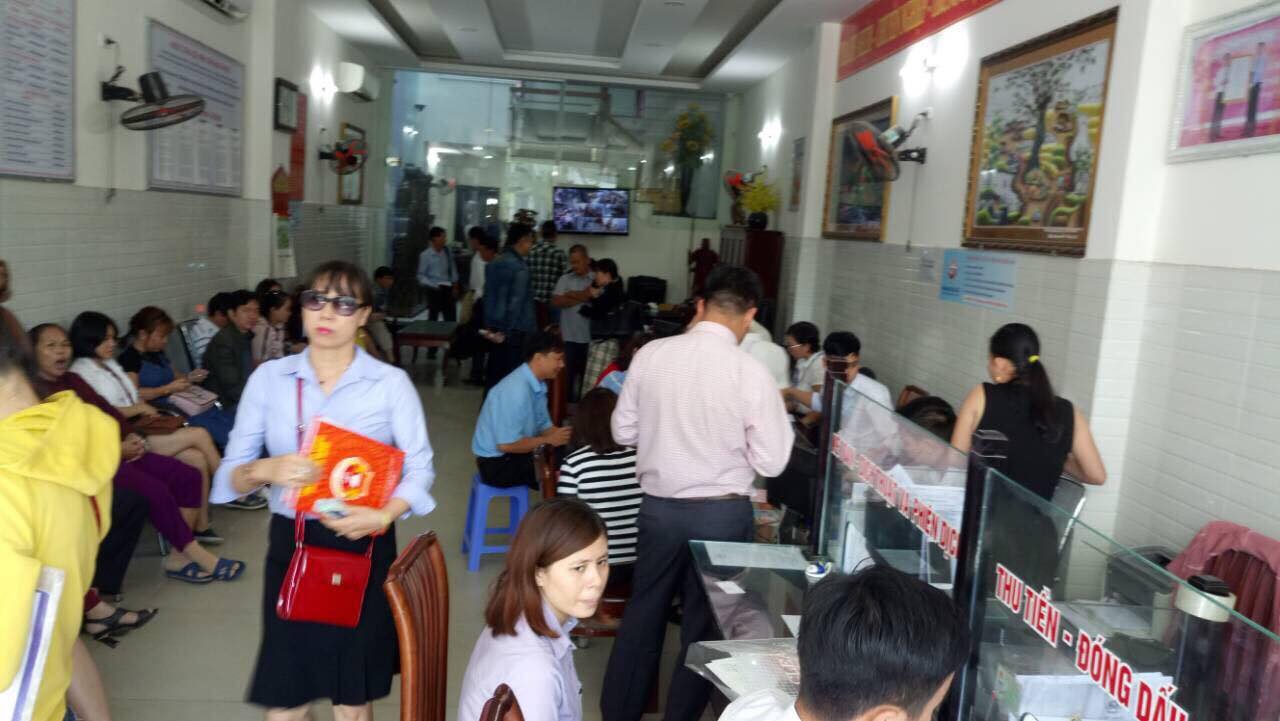Real estate predicted to bounce back from current slowdown
Unreasonably high prices of real estate across Da Nang are now falling after a ‘land fever’ spreading rapidly several months ago.
 |
| A notary office on So Viet Nghe Tinh street is always crowded with clients who come here for property transactions-related paperwork |
Many real estate experts attributed the high demand for land purchases at that time to rumours of the implementation of large-scale projects
For instance, land prices in the northwestern part of the city have skyrocketed after a rumor that the construction of the deep-sea Lien Chieu sea port and the relocation of the city’s railway station would be deployed there.
During the 1st quarter of this year, land prices increased by up to 50% against last year in some ‘land fever’ hotspots.
Along the coastal routes of Hoang Sa and Vo Nguyen Giap, the average price per m2 stood at up to 300 million VND.
Other ‘land fever’ hotspots which attracted moneybags were the An Thuong residential quarter, the Ngu Hanh Son District-located Nam Viet A urban area, and the southern side of the Hoa Xuan residential area in Cam Le District, with a boom in makeshift real estate transaction offices along internal road there.
In reality, land across the city several months ago was speculated as most of the land buyers were speculators, who purchased and did nothing but waited for a chance to resell the land plots in the hope of reaping the highest possible profits. The majority of them were from such big bubs as Ha Noi and Ho Chi Minh City.
In his remarks, Mr Nguyen Huu Duc, the Director of the city-based Protech Real Estate Company, said the ongoing excess supply of properties is now pushing land prices down in many local areas.
Of note, the prices of land lots in prime locations is predicted to continue to climb in slow yet steady manner in the coming time.
Mr Duc also noted that the current real estate slowdown would last until late this year, and early next year would see this lucrative aspect bouncing back with more active engagement by domestic and foreign investors.
Against the existing backdrop of the land price fluctuations, it is highly recommended that buyers should be cautious before opening their pockets, and sign deals with proper contracts to avoid pricing traps.
In some cases, the prices of some properties sold to end-users in some real estate projects are higher than the original rate.
Many real estate experts also underlined an urgent need for the general public to learn about a list of projects eligible for the transfer of land ownership rights before making their purchase decisions in order to minimise risks.
The names of these real estate projects with specific legal framework are now on display on the official website of the Department of Construction.
Dr Nguyen Phu Thai from the municipal Socio-Economic Development Research Institute emphasised a must-do to ensure an efficient and transparent real estate market.
Meanwhile, the city is now facing a severe shortage of thorough field surveys and research activities into the lucrative property market.
It is believed that investors rely on bank loans, so commercial banks’ extreme caution in reviewing loan requests and their tightened lending standards would prevent speculative investments into the real estate sector.
Actually, according to many seasoned local experts, this is not a radical solution to ensure the transparency of the property market.
One of the main reasons is that land investors and speculators, many of whom are from the northern region, usually put money in backpacks so they can conduct transactions in cash any time, instead of conducting transactions via banks.
The municipal Socio-Economic Development Research Institute is now asking for official permission from the city leaders to conduct research activities into the current property market in a bid to avoid incorrect and subjective assessments of this high risk section.